Earlier this summer, Steve Phinney and Jeff Volek, authors of The Art and Science of Low Carbohydrate Performance, headed to the Western States 100-mile Endurance Run, to study how runners in this grueling race fared, literally, for they were checking how the athletes performed, AND how they ate. Steve Phinney says that more and more endurance athletes are choosing low-carb, high-fat. They’re choosing this diet both to get over digestive problems that hit in such a demanding event, and to win the race, and win it BIG! That’s what Tim Olson did this year. A self-proclaimed low-carb eater, Tim won the race — with a record-breaking pace. — Shelley
Steve Phinney, earlier this summer, you were at an Ultramarathon Race.
STEVE PHINNEY: It’s called the Western states 100 or also the Western states endurance run. The race was first held, I think it was 1974, and has been held almost annually since then, except for years of wildfire or other unexpected things. It starts at Squaw Valley by Lake Tahoe and runs up over the Sierra Nevada Mountains and down to the western foothills town of Auburn, which is just about 40 miles north of where I live. 
Did YOU run?
STEVE PHINNEY: Oh, no no! I was there to appreciate what a bunch of other racers were doing. I was there as a researcher, in conjunction with my colleague Dr. Jeff Volek from the University Connecticut. Jeff came out with a team of his graduate students, and we performed a study on racers, getting data on some of the racers before the race, immediately after the race, and then for multiple days following completion of the race.
Why were you doing research?
STEVE PHINNEY: The reason we were particularly interested in a 100 mile race, and particularly in this race, is that increasingly, among what are called ultra endurance athletes, there is greater appreciation among some of them, that they perform better when they cut way back on their carbs. They find they do much better that way than if they follow the traditional very high carbohydrate fueling practice called “carbohydrate loading.” So this race is now composed of a heterogeneous mix of runners, some of whom follow the traditional high carb racer’s diet, and some of whom have switched over to a low-carb strategy. We did not tell runners what they should eat. But we had plenty of dietary styles from which to choose. So among the 350 or so participants in the race, we were able to recruit about 25 people, half of whom said they were following a high carb diet, and the other half were following some version of a low carb diet.
Are you sure your “test” runners ate what they said they ate?
STEVE PHINNEY: There were many possible ways that we checked out what they said. One, we had them give us diet records of what they ate in the three days before the race. Two, we had them, after the race, write down everything that they could remember they ate during the race. Three – half of our volunteer “research subjects,” we put up at a local hotel near the end of the race and observed how they ate. Now, they were not locked up and required to eat only in front of us, but we are all living in the same space for a couple days and we got to see a lot of how they were eating. In addition, we had them back each morning to get blood samples from them, so we will have a pretty good sense of who was who was eating what when we examine their lab results later on. That is, from the samples we collected we will be able to use biomarkers that indicate who was eating high-carb and who was eating low-carb.
Diet-wise, who won? Who lost?
STEVE PHINNEY: The surprising thing about this year’s Western 100 race, which also surprised the people who organized the race, is that it this year for the first time a low-carb runner — an openly professed low-carb runner, won the race.
 A low-carb runner WON the race?
A low-carb runner WON the race?
STEVE PHINNEY: That’s correct. His name is Tim Olson. He lives in Oregon, and he says he made the transition to low-carb about a year or so ago. Tim won a 100 mile race, I think, in late fall or early winter, and so he had already demonstrated he can do the event on low-carb and when he came into this Western 100 race, his goal was not just to do the race. He stated in advance that his goal was to win it. So he ran at the front of the race. He was running with a number of other very accomplished male competitors — people who had done this race before and placed well before. Somewhere between mile 65, well, he went through the checkpoint at mile 65 a couple minutes ahead of the next guy, and there were a group of of four runners who were within four of five minutes of each other around them. But when he passed the checkpoint at mile 85, he had opened the gap somewhat. Then between mile 85 and 100 — and keep in mind, by mile 85 Tim Olson has already run the equivalent of over three marathons — somewhere in those final 15 miles, Tim Olson opened up an an additional 15 minute gap between himself and all the other runners. That means, after running 85 miles, he was able to put on a burst of speed at the end of the race, and he finished 15 minutes ahead of his next closest competitor.
Tim Olson finished 15 minutes ahead?
STEVE PHINNEY: Yes, but more importantly he knocked 21 minutes off the overall time course record.
He beat the course record by 21 minutes!
STEVE PHINNEY: That’s correct. This is all on a low-carb high-fat diet with relatively little of what people call in-race calories.
During the race, did he eat?
STEVE PHINNEY: All these runners eat and drink throughout the 100-mile race, because you can’t maintain your hydration unless you drink, and most runners find that if you can’t eat during the race, for instance, if you get a upset upset stomach, you drop out. That’s because if you can’t eat, you hit the wall or do what the other guys call bonking. Bonking is what happens to runners who are adapted to racing on sugars and carbs, and if they can’t eat enough carbohydrate, their blood sugar drops too low, because there isn’t enough glycogen . . . carbohydrate in their system to make a storage form of carbs called glycogen. So if these body stores of carbs burn out, blood sugar goes too low, and the brain suffers from inadequate fuel, and if you don’t stop running you’re going to pass out. With bonking, it feels horrible, and if you don’t stop, then you’re going to go into a coma.
Why didn’t he need much? And what DID he eat?
STEVE PHINNEY: I wouldn’t tell you the details even if I knew because it’s confidential research information. And I don’t think he’d want any of the details of what he’s doing to be public, because, realize, all of a sudden this guy knows absolutely that he’s got a remarkable competitive edge.
What if Tim Olson is just born to run?
STEVE PHINNEY: Some of it is Tim Olson’s inborn, God-given talent as an ultra endurance runner, but some of it has to do with the diet he’s switched to eating – a low-carb diet. We don’t have the details of it, but typically the low-carb runners eat far less during a race. A high carb racer may eat 6,000 in-race calories. But typically a low-carb racer will eat 2000 calories a day during the race, or less. And the better adapted the racer is to low-carb, they find the less they have to eat.
But Olson did eat – so . . . was it glucose gels? Or did he go for butter?
STEVE PHINNEY: Well typically he probably wouldn’t eat butter or fat anyway because this guy is a super slim, highly efficient, fat-burning athlete. He’s got very little body fat, but if let’s say he’s 7% by weight body fat that means he still has at least 30,000 calories of fat in his body when he starts the race.
A 30,000 calorie tank of fuel? On his body?
STEVE PHINNEY: When the starting gun goes off, 30,000 calories of body fat. Now, if you run this race typically your body will burn 10,000 calories over the 100-mile course, so he’s got enough to run the race three times over before runs out of fat fuel. But that’s because he’s a fat-burner. For the carb loaded runners, who are less adapted to burning fat, at the same starting line, even if they’d done their carb loading to the maximum, the most carb calories they’d have in their bodies is 2,000. Now, if you’re running on a carb fuel strategy, and you’ll need 10,000 calories to complete the 100-mile race, that 2,000 calories of carb stored in your body at the start of the race is only 1/5 of the fuel that you need to complete the race.
High-carbers have to fuel up more often?
STEVE PHINNEY: That’s correct. In contrast, if you’re running on a fat fuel strategy, you’ve got three times as much fuel in the tank as you need to complete the race and that’s the beauty, literally the metabolic beauty of the low-carb adapted athlete in an ultra-performance event.
What did other racers eat?
STEVE PHINNEY: We really can’t say. We only got data from 25 athletes out of more than 200 athletes in the race. That’s less than one in 10. We were sort of rushed to get this protocol in place and so we did not recruit people months ahead of time. We were recruiting people the day before the race. They were walking in saying, “I want to be in your study,” and so I do know, that it’s fair to say that among the top 20 males, in addition to the winner, Tim Olson, there were at least a couple other well adapted low-carb runners among the men, and among the top 20 women there were at least two of them who were low-carb runners.
Were some top runners high carb?
STEVE PHINNEY: Absolutely So this speaks quite possibly to the issue of individualization. It may well be that all of us don’t come out of the exact same cookie-cutter in terms of what we look like and what our metabolism looks like. It seems that some people’s metabolism tolerates lots of carbs without much in the way of side effects. That is, the people who tolerate carbs remain highly insulin sensitive even when they eat a high carbohydrate diet, so that fuel they eat is rapidly processed and goes to the tissue and gets burned for fuel and doesn’t get stuck in fat storage. But it also seems that if there is even a hint of insulin resistance in a person’s metabolic makeup, you can make it worse with a high carb feeding. Meanwhile, in that same person, you can make that insulin resistance essentially go away with low-carb eating. So some people are probably are well adapted to be high carb runners and some people are much better adapted to be low-carb runners.
Some do fine on carbs, but some really don’t?
STEVE PHINNEY: Sure. If they don’t keep carb loading throughout the race, a carb-burning has an empty glycogen/sugar fuel tank, and getting access to the fat fuel tank does not happen overnight and it doesn’t happen halfway through the race. So the guy who starts out with 2000 hours of glycogen and is a carb-burner, he or she cannot burn all that glycogen and then suddenly switch over and efficiently burn fat. We know this, because we demonstrated 30 years ago and have shown over and over again in more recent studies that that process of adaptation to fat-burning takes at least three weeks and maybe as long as two or three months to get your fat-burning fuel utilization process fully adapted. A fat-burning athlete needs to be highly efficient in burning fat, so it’s crucial that they be fully adapted.
Glycogen – that’s the stored energy for burning carbs.
STEVE PHINNEY: Yes. You know, we often talk about blood sugar, and people think there’s a lot of energy stored in the body’s blood sugar. Actually at any one moment in time, in a healthy person’s blood, with blood sugars running between maybe 75 and 95 milligrams per deciliter, there are never more than 40 calories of free sugar total in the body.
Two teaspoons of sugar in the blood?
STEVE PHINNEY: One gram of sugar has four calories, and teaspoon can hold around 3 grams. So, maybe in a healthy person’s blood, there’s a couple of rounded teaspoons of sugar there. And that’s it. That’s enough to run half a mile. So in terms of blood sugar, there’s only half a mile of fuel circulating in the blood before it’s all gone down zero. So the body’s way of coping with that is to make this stuff called glycogen which is kind of like starch granules. It’s kind of like flour. Particles of flour that are stored in the liver and in the muscle and can be released on demand, but the human body cannot store very much of that. And it’s not an energy-efficient form of storage because, like any other form of starch in the human body, it has to be hydrated. There has to be water with it. So you have to store 3 g of water per gram of carbohydrate stored as glycogen, so that that carries a lot of weight to carry that much fuel. In contrast, fat is a very efficient fuel. It carries 9 calories per gram and doesn’t need any water with it in order to be stored.
You’d rather get your stored energy from the fat.
STEVE PHINNEY: For prolonged event like this, why not use the fuel tank that is big and holds enough to get you to the finish line, rather than having to constantly be trying to refuel every few miles? In this race are checkpoints at frequent intervals, and not only do they do medical checks on the runners because not only is this an exceedingly demanding event, but they have food at each and every one of these checkpoints. That’s because their experience in the past is that, if they don’t have food every five or 10 miles along in the race, the runners are not going to make it to the finish line. But that leads to another important distinction between the high carb diet high-fat diet and that is for many runners when they use the high carbohydrate fuel strategy many runners found that by mile 50 and certainly by mile 75 that they started having major gastrointestinal upset. The upset would get to the point that not only could they not hold food down, but they had a hard time holding liquids down.
Some high-carb runners had trouble with digestion? But not on low-carb/high fat?
STEVE PHINNEY: Yes, and that’s disastrous in a race where the sweat losses and the evaporative losses are so great that if you can’t keep fluids coming in, you’re out of the race. Many of the high-carbohydrate runners experienced frequent and severe gastrointestinal problems. In fact, what has induced many of them to do this bold thing and switch to get being low-carb is that they’ve heard from other people who do this race that when they went from high carb to a low-carb, high-fat diet those gastrointestinal problems went away.
Could some have celiac, or a grain intolerance?
STEVE PHINNEY: In the past everybody assumed that there were some people who just couldn’t complete race because they were, as some people called them, “hurlers.”
They’re called hurlers?!?
And it was just assumed that this was a characteristic that prevented some people from completing the race. Runner after runner that I talked to told me, “the thing that’s made a difference for me is this diet.” And for two reasons. One is, I don’t get an upset stomach. So the food I want to eat, I can eat.
So while we were there, we got to know a guy, I think he was in his early 60s. He said, “You know, I was getting to be a little hungry when it came to be dawn.” Now, keep in mind, this race starts at five o’clock on Saturday morning. So he’s talking about having run for miles, and what happened when he arrived at a checkpoint on Sunday morning. And he said, “When I came to this checkpoint they had bacon and eggs. So I took a bite of the eggs and I said, Nah. And then I had some bacon, and it tasted so great! And I finished so strong!” This was a guy who wasn’t racing for the lead, obviously. But to legally finish the race, you had to complete it in 30 hours. So here was this guy who had never completed the race before, but now he’d just eaten a big pile of bacon and he got enough energy to for the first time, finish the race.
And then there was a woman who I think is her second race and in the last year she switched from high carb to low-carb. She had a major problem with stomach upset last year. She switched to low carb this year and had no problem finishing the race, and in fact, she best that her previous time by over two hours . All on a low carb diet.
Some low-carb runners were in their 60s?
STEVE PHINNEY: There are a number there a number of older runners in this race and some people have come back to the race, having given it up, even though they’re 10 years older, they think they’re performing better, after they’ve made the transition to the low-carb high-fat metabolic fueling strategy.
When we can see your data?
STEVE PHINNEY: We generated a lot of samples, so we’ll be keeping the laboratory folks who do all the hard work busy for three or four months. And then in analyzing the data, it’ll probably be through Christmas. And we hope to come back to the Western States 100 next year, better prepared and with better support. You see, we did this whole thing this year on a shoestring. Nobody got paid to do this. Not the researchers and not the test subjects. We were all doing this on our own time. And we hope to come back and report to the organizing body, the Western States Endurance Foundation. They made any quite significant donation to us, to help defray the costs of our lab analysis. So we will be coming back to their pre-race meeting next year reporting our science results. So the absolute latest that you’ll hear more is the last weekend in June of 2013. This is when our results will become public knowledge.
Western States 100 Mile Run 2012, Champion Timothy Olson from Timothy Olson on Vimeo.

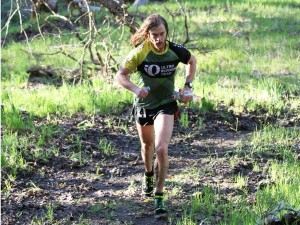
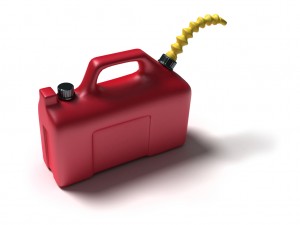
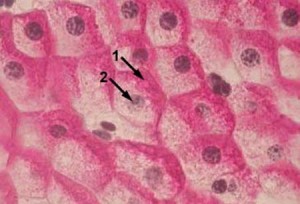
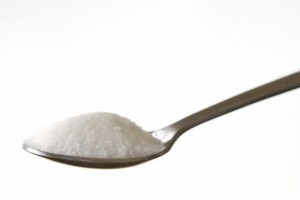

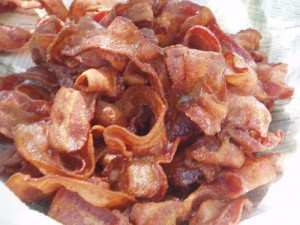
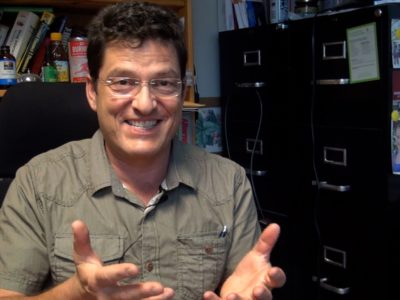


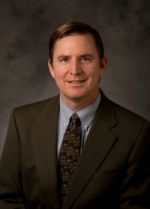
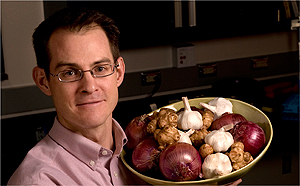
87 comments for “Western States 100 – Low Carber Wins Ultramarathon – Steve Phinney and Jeff Volek Study”